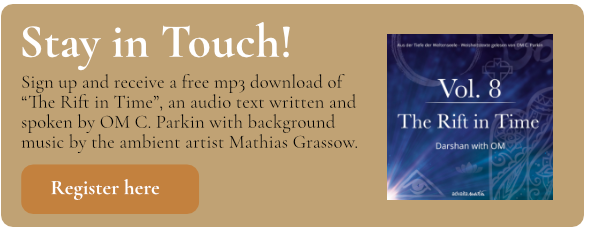Advaita
Advaita is known as the Indian teaching of the one indivisible being, which is nothing but all-pervading consciousness. Advaita can be called the highest and ultimate spiritual teaching of humanity. However, Advaita is actually a non-teaching, because "being" cannot be taught, it can only be lived. And actually this teaching did originate not only in India, but has also developed in other cultures. Under different names it forms the innermost core, the essence of absolute Truth, which is inherent in every wisdom tradition and appears in the writings of Christian, Islamic and Jewish mysticism as well as in Buddhist Zen. It can be found in the writings of Master Eckehard and Jalalludin Rumi, in the writings of the Hasidim and Zen Masters as well as with Ramana Maharshi in the Indian Advaita tradition.
Only the true Self, that which is eternal and does not come and go, counts in the classical form of the Advaita teachings, a pure "philosophy of BEING". This is the only thing the great Indian Advaita teachers speak about, without paying much attention to the transitory, often unpleasant conditions of human existence. Western seekers certainly suffer more from these than Eastern ones, since in the West the seekers live in a "spiritual desert" so to speak („The occident is a spiritual developing country“ OM C. Parkin), and are not supported by an all-pervading spiritual matrix as in India. The Guru principle is largely unknown to them and the person of the Guru is often viewed with distrust and rejection, so that they are initially left totally on their own.
In order to take into account the Western mind, its overemphasis of the intellect, its identification with a split off "I" and its emotionality suppressed by thinking, a quasi-Western form of the Advaita teaching has developed. This “philosophy of becoming” complements the pure teaching of being as it has emerged in the East. That is why OM C. Parkin, for example, precedes Ramana Maharshi's great self-enquiry with the question: "Who am I?", which aims at the realization of being the SELF, with the Inner Work of the small self-enquiry. This work is concerned with what I am not and what stands in the way of the realization of Oneness, by including Western psychology and following the principles of "Inner Science".
In the Mystery School he founded, OM teaches inner science as an experiential path of knowledge. On this path he accompanies developmental processes on the relative level of human existence, which often lead to the lowlands and imperfections of physical existence and cost "blood, sweat and tears". They serve the process of becoming human, the development into an adult human being and the unfolding of human potential on various levels. Such ongoing developmental processes finally cause, through a never-ending expansion of consciousness, the Self-revelation through self-development, the realization of the SELF.
Thus the "philosophy of becoming", which contains a knowledge of the cycles of transience, which in their eternal coming and going are imperishable as well, joins the "philosophy of BEING" as a form of Advaita evolved in the West. These two forms of Advaita, which do not differ in their essence, unite on the paradoxical path on which all paradoxes and opposites dissolve into the Great Web of Being in an infinitely ascending and descending spiral of evolution. Through the union of these two forms of Advaita, the Eternal Philosophy, the Philosophia perennis, is born, which encompasses all that which at all times was present in the knowledge of all peoples as sacred truth. Thus the pure teachings of Being are completed to the Integral Yoga, as taught by OM C. Parkin and as taught by Sri Aurobindo, a Yoga that integrates all relative levels of existence and unites all opposites in the Great Marriage.
